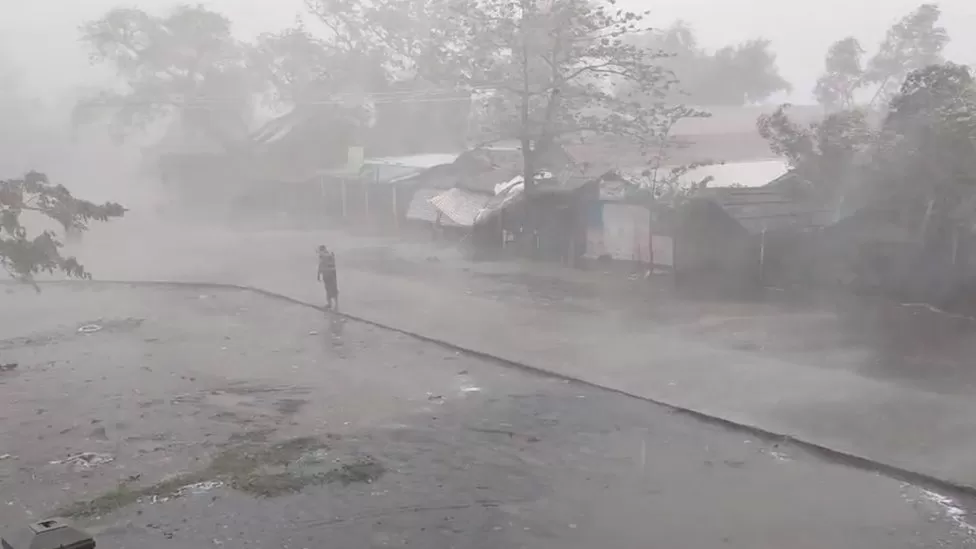Cyclone Mocha: Deadly storm hits Bangladesh and Myanmar coast
 NepalPress
NepalPress

A powerful cyclone is hitting the coastlines of Bangladesh and Myanmar after intensifying into the equivalent of a category-five storm, BBC reported.
Cyclone Mocha is bringing heavy rain and winds of up to 195kph (120mph), which could see dangerous flooding on land around the Bay of Bengal.
Storm surges of up to four metres could swamp villages in low-lying areas.
There were fears of damage to the world’s largest refugee camp, Cox’s Bazar, home to nearly a million people.
Forecasters warned Cyclone Mocha could be the most powerful storm seen in Bangladesh in nearly two decades. About 500,000 people have been evacuated to safer areas.
Heavy rain and driving winds battered the region as the storm system moved to the coast, with reports of increasing disruption near the city of Sittwe, in Myanmar, from about 13:00 (07:00 GMT).
A telecom tower was brought down by the high winds as the cyclone approached. Videos shared on social media also showed roofs being blown off houses and billboards flying off buildings in Yangon amid teeming rain.
Images from the city of Mrauk U showed palm trees bending in the wind, metal roofing sheets being swept into the street and a few people still hurrying to take cover in storm shelters.
Local media reported that a 14-year-old boy was killed by a falling tree in Myanmar’s Rakhine State, while there were reports of damaged and collapsed buildings in various parts of Myanmar.
In Bangladesh, too, gale force winds started to blow, accompanied by heavy rains. In Cox’s Bazar, the streets emptied out as the storm started to pick up, with trees swaying in the wind and skies getting darker.
The BBC saw mothers with babies, young children and the frail crammed into one school in Cox’s Bazar which is being used as a temporary cyclone shelter.
Mohammed Heron Miah, a peanut seller came to sell his wares, saying: “There’s no food here, people have brought very little, so I thought I’d sell peanuts.”
While he went about his work, he was also terrified. Glancing out at the rain he said: “I’m scared my house will be destroyed.”
The Bangladeshi meteorological department office said the maximum sustained wind speed within 75km (45 miles) of the centre of the cyclone was about 195km/h (120mph), with gusts and squalls of 215km/h.
Dr MM Malik, a meteorologist at the government storm warning centre in Dhaka, told the BBC that the cyclone’s diameter was 520km, which means it will take some time to fully cross the coastline.
In preparation for the storm’s arrival, nearby airports were shut, fishermen were ordered to suspend their work and 1,500 shelters were set up as people from vulnerable areas were moved to safer spots.
Particular concerns were expressed for the many Rohingya refugees living in makeshift homes in the camps of Cox’s Bazaar and people on the western coast of Myanmar.
“For a cyclone to hit an area where there is already such deep humanitarian need is a nightmare scenario, impacting hundreds of thousands of vulnerable people whose coping capacity has been severely eroded by successive crises,” said UN humanitarian co-ordinator AI Ramanathan Balakrishnan.














